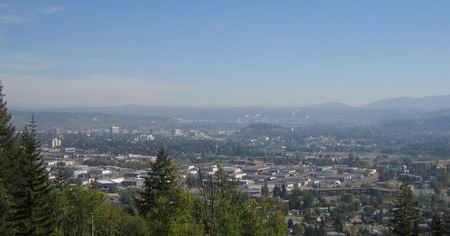Prince George Council One Week fromTask Force Report on Air Quality
By 250 News

Haze hangs over Prince George during air quality advisory in summer of 2007 (photo, opinion250 archive)
Prince George, B.C. - The Mayor’s Task force on Air Quality will present its interim report to Prince George City Council one week from today.
The report is the result of consultation with community, government and private-sector groups. As part of the report, the Task force has also commissioned two best practices studies, one on air quality management the other on air pollution control.
Once the interim report has been presented to Prince George City Council, the task force will begin public consultation. There will be a public session on November 5th at the Prince George Civic Centre. That session will run from 7 to 9 p.m.
The Mayor’s Task Force on Air Quality is under the direction of Dr. Peter Jackson. The professor and air pollution researcher is on sabbatical from UNBC and is the third Chair of this task force. Initially, Dr. Charles Jago was the Chair, but he resigned when he took on a position with the Canfor Pulp Income Trust. Then Howard Brunt stepped in, but he resigned when he decided to move to Vancouver Island with his ailing wife.
Previous Story - Next Story
Return to Home










And we have people that are worried about how air quality will effect the economy. How about our health and what is that cost to our society? There was a book written many years ago about how there are some who like to find solutions to our problems and others that just "muddle through" and the latter is where we are today.
There are all kinds of scientific solutions available for us to use but we simply ignore them and continue on with studies and more studies. Where will it all end?
When will we pick up the ball and start the game is the next question?
Cheers